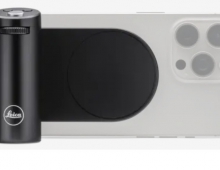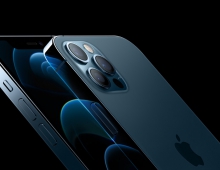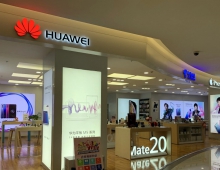
Apple Supplier AMS Develops Optical Sensor Which Measures Ambient Light from Behind a Smartphone’s OLED Screen
AMS, a supplier of high performance sensor solutions to companies indluding Apple, released the TCS3701, an RGB light and IR proximity sensor IC which can accurately measure the intensity of ambient light from behind an OLED screen.
This capability supports today’s industrial design trend to maximize smartphone display area by eliminating front-facing bezels, where an ambient light/proximity sensor is typically located.
By developing this ‘Behind OLED’ ambient light/proximity sensor, ams enables smartphone manufacturers to achieve the highest possible ratio of display area to body size while retaining crucial touchscreen disablement and automatic display brightness/color adjustment functions, which require an RGB/infrared light sensor.
Despite the constraint of operating behind an emissive OLED display screen, the TCS3701 senses the addition of the ambient light passing through the display to light emitted by the display’s pixels located just above the sensor. ams says it has developed algorithms which enable accurate detection of ambient light levels without knowledge of the display pixel brightness above the sensor.
Light transmission through an OLED screen is limited by its opacity, but the TCS3701’s ultra-high sensitivity to light means that it can still produce accurate light measurements in all lighting conditions.
The TCS3701’s 2.0mm x 2.5mm x 0.5mm OQFN package is small enough to be placed behind a smartphone’s OLED screen. It gives a smartphone designer the flexibility to mount an IR emitter to support the proximity sensing function in the best front-facing location. Cross-talk compensation algorithms provide for reliable proximity sensing performance.
The TCS3701 is available for sampling now.
AMS provides Apple with optical sensors for 3D facial recognition features on its newest iPhones.
The company also announced a deal with Chinese software maker Face++ to produce new 3D facial recognition features for smartphones.
The company has also announced the an ultra-small 1D time-of-flight sensor for accurate proximity sensing and distance measurement in smartphones.
The sensor is ideal for implementing presence detection, for example to trigger the operation of a facial recognition system when the user’s face is in range. Supplied in a 2.2mm x 3.6mm x 1.0mm package, the new TMF8701 sensor fits in a narrow bezel, helping smartphone manufacturers to realize widescreen phone designs that have a high display screen to body ratio.

The TMF8701 integrates a VCSEL infrared emitter, multiple SPAD (single photon avalanche photodiode) light detectors, time-to-digital converter, and a histogram processing core. The device implements all histogram-based presence detection, distance measurement and proximity sensing algorithms on-chip.
The TMF8701 separately identifies reflections from fingerprint smudge contaminations on the display screen and optical reflections from objects beyond the cover glass, such as the user’s face, maintaining reliable performance even when the sensor’s aperture is dirty.
According to AMD, the new he module achieves accuracy of ±5% when measuring distance in the range 20-60cm in normal lighting conditions. Even in bright sunlight (100klux), ±5% accuracy is maintained at a range of up to 35cm.
The TMF8701 draws only 940µA in proximity sensing mode when sampling at 10Hz.
The proximity sensing capability of the device can also be used to trigger the display and face recognition system to switch off when detecting a reflective surface at a distance of 0-10cm from the screen.
The TMF8701 time-of-flight sensor is in mass production now.





















